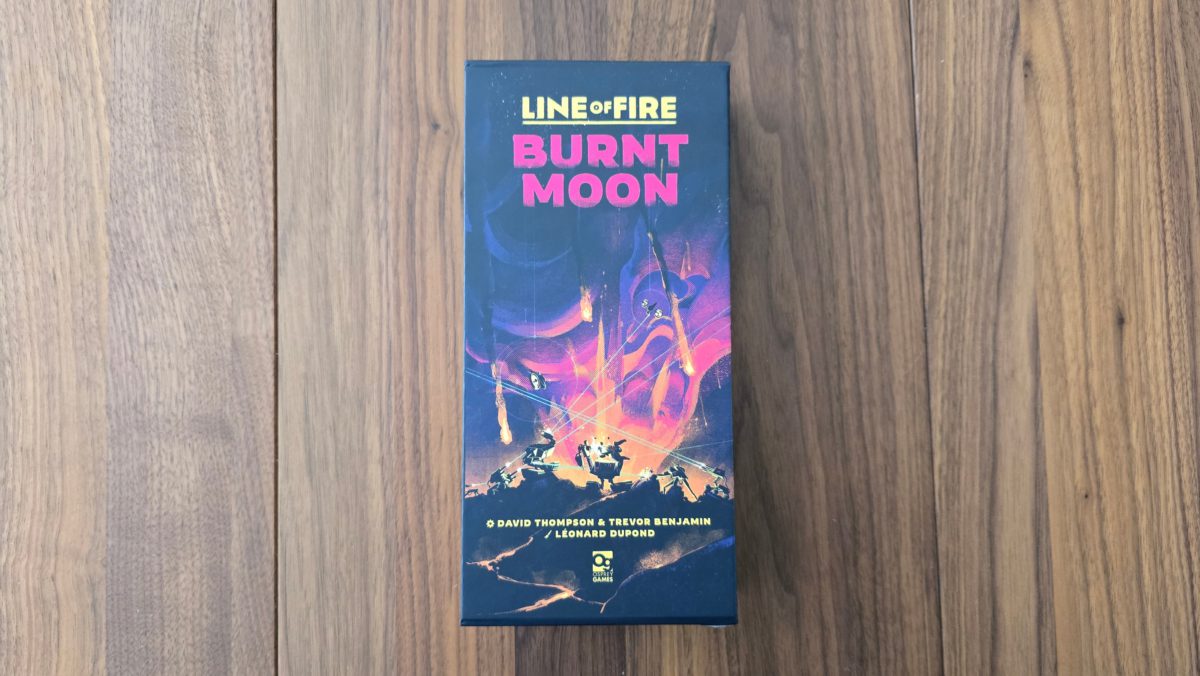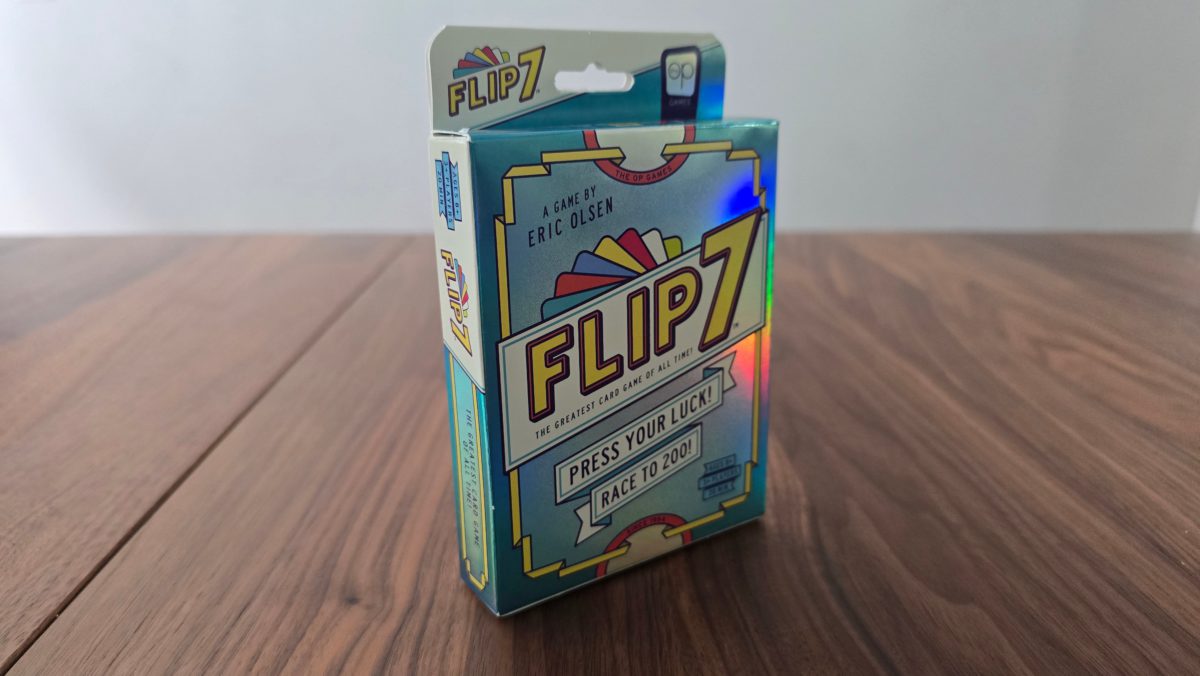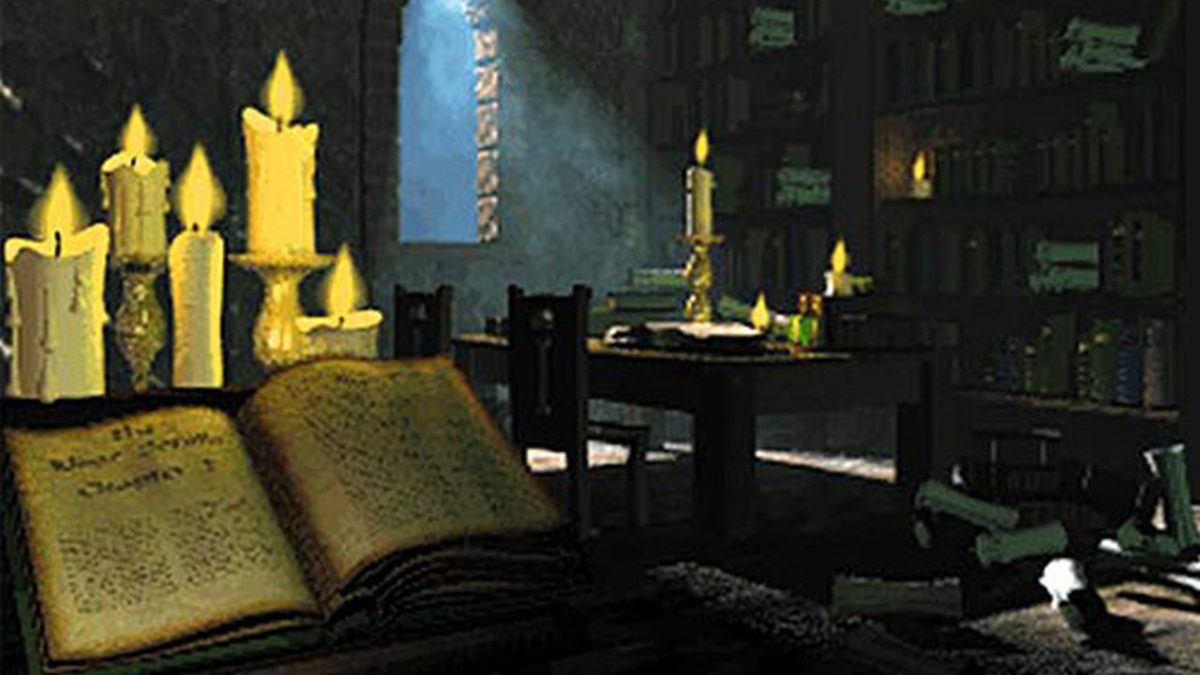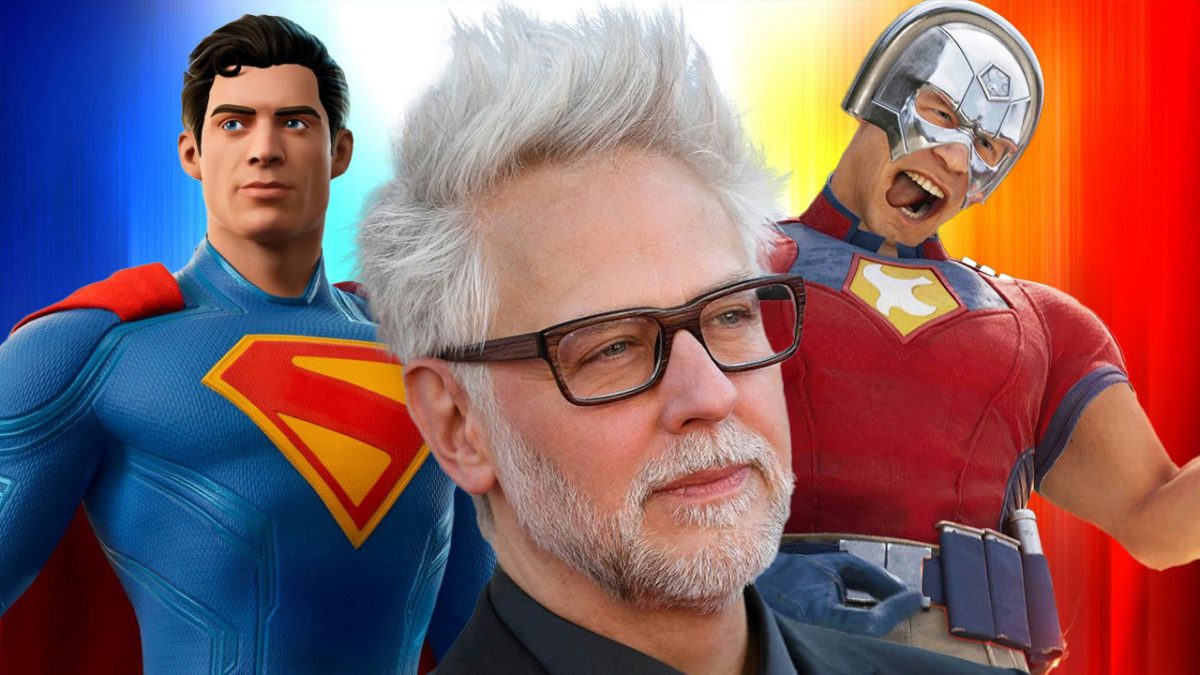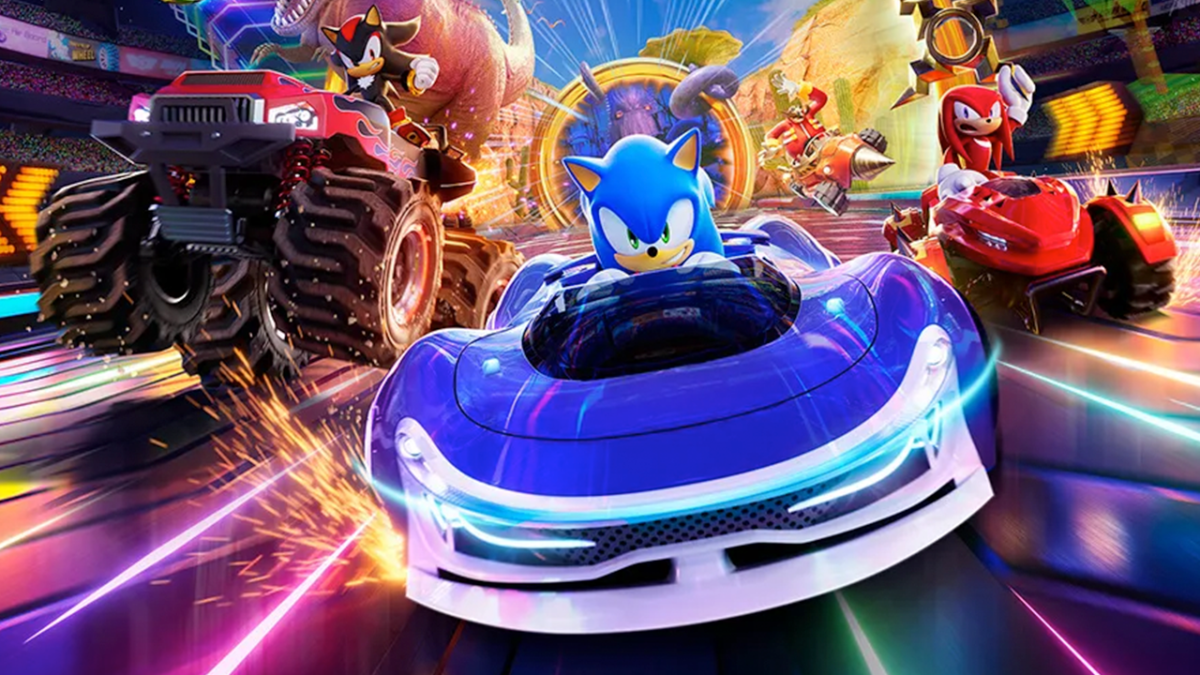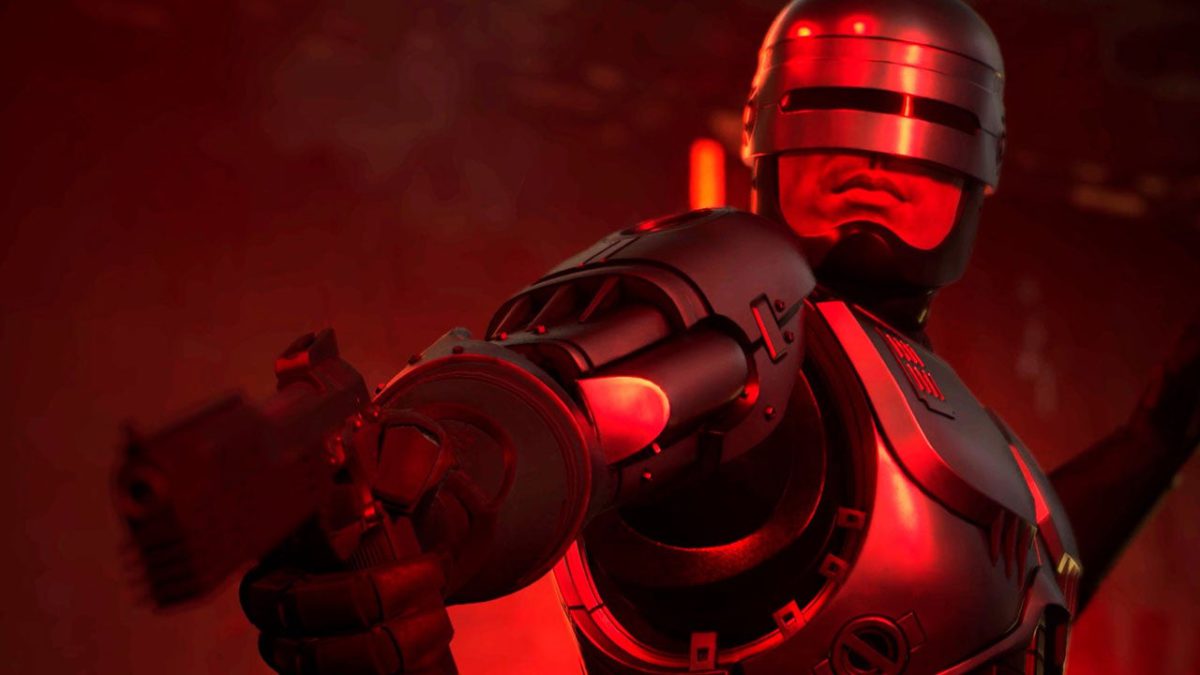
Of the many war-themed board games, Osprey Games’ Undaunted series is arguably one of the best in the current board game generation. These games’ unique deck-building mechanics, mixed with historical theaters of war, including Normandy, Stalingrad, or North Africa, have helped grow its fanbase. And the release of last year’s Undaunted 2200: Calisto took the series from the fields of World War II and into space with a futuristic science fiction entry. Now, the team at Osprey has distilled the experience of the series into a solely deck-building experience with the release of Line of Fire: Burnt Moon. And they’ve done so with a surprising level of success.
Ditching the modular tiles or fold-out boards of the Undaunted games, Line of Fire gives two players a set of five identical location boards, each with an assigned point values. Once all five get randomly placed out for both players, each side deploys forces to the various spots in an effort to hold eight points’ worth of locations, or destroy all of the oppositions land-capturing units, claiming victory.
Turns begin with both players drawing four cards, and secretly selecting one of those to offer up in a bid to gain that round’s initiative. Whoever offers the card with a higher value gets to play first. Both of those cards are then discarded and the first player takes their turn placing out their hands of cards, followed by the second player, and once they are finished, new hands are drawn and the the process starts over.
Set on Jupiter’s moon, Io, in the world of Undaunted 2200, Line of Fire has a science fiction motif. So, instead of troops on the ground, you deploy ROVs – Remote Operated Vehicles – into the warzones. ROVs are composed of four different varieties, divided into A and B forces. Each ROV type has special actions it can take. For example, the MOSS units allow you to capture locations, while the DaCU units can build fortifications that can only be activated by playing an identical unit card on a previously deployed card. Players also have access to a small selection on personnel cards which provide benefits including adding cards to your deck or disabling an opponents ROVs, further adding strategy elements to Line of Fire.
For players who are familiar with Osprey’s Undaunted titles, many of Line of Fire’s mechanics will feel identical, from the initiative bidding to removing casualties. When a unit is destroy in Line of Fire, players first try to remove a copy of that card from their hand. If none are in their hand, they then search their discard, then their deck, then the reserve, and lastly remove the unit on the board that is being attacked. I personally love this approach, as I find searching for hold cards and seeing your supply slowly dwindling away to be far more of a tense experience than simply removing the card that was attacked. It’s also through this method that if ever all of you or your opponent’s MOSS ROVs (the only unit type that can capture) are gone from the deployed regions, you lose.
Despite the box’s small footprint, Line of Fire provides a riveting strategic experience in a fairly short time frame. The matches I played rarely took even a half hour to complete, with games taking even less time the more experience both players have, as you can quickly play your three cards and be done.
Even with both choices of cards being identical, there is still a good bit of strategy required in Line of Fire. Knowing what cards to add to your deck, where to deploy them, and when to retreat when a battlefield is lost are all key decisions you have to make. Being a deck-building game, there is still some aspect of luck involved, as the cards you have in hand dictate what actions you can take on your turn – but I never found that luck overpowered solid tactics and decision making. That said, I did find that some of Line’s design direction made it harder to get into than I feel it really needed to be, with much of that coming down to the card designs and naming.
Admittedly, I have not yet played Undaunted 2200: Callisto, so this may be less of an issue for some folks, but the naming of the ROVs threw my friends for a loop and never made sense. Terms like “infantry”, “tank”, and “sniper” I can grasp at a glance, but if you were to ask someone which of “MOSS”, “TIR”, “xED”, or “DaCU” was your heavy artillery unit, they would probably look at you and walk away.
Between the random names and various symbols that make almost as little sense as the names, it just makes the cards harder to decipher than they need to be, even with the handy reference cards that both players have. I get that Line is set in the future and leans into the science fiction element, but sometimes it’s just easier to say “my tank is attacking your plane”.
From a visual and component standpoint, Line of Fire is a striking game, with artwork and designs that evoke classic science fiction book covers with blocky-square robots. Both players also have unique artwork for their units, that are also clearly denoted by heavy use of either redish-pink colors or blues for their respective side. This extends even into the storage solution with each player’s cards, fortifications and location tiles all fitting snuggly into a color-coordinated box, that both then are carried in a magnetically sealed box roughly the size of a VHS tape. I’m a sucker for games with good storage solutions, and Line of Fire’s does it’s job splendidly, making it quick and easy to set up and break down, and small enough to fit in your bag to take with you.

